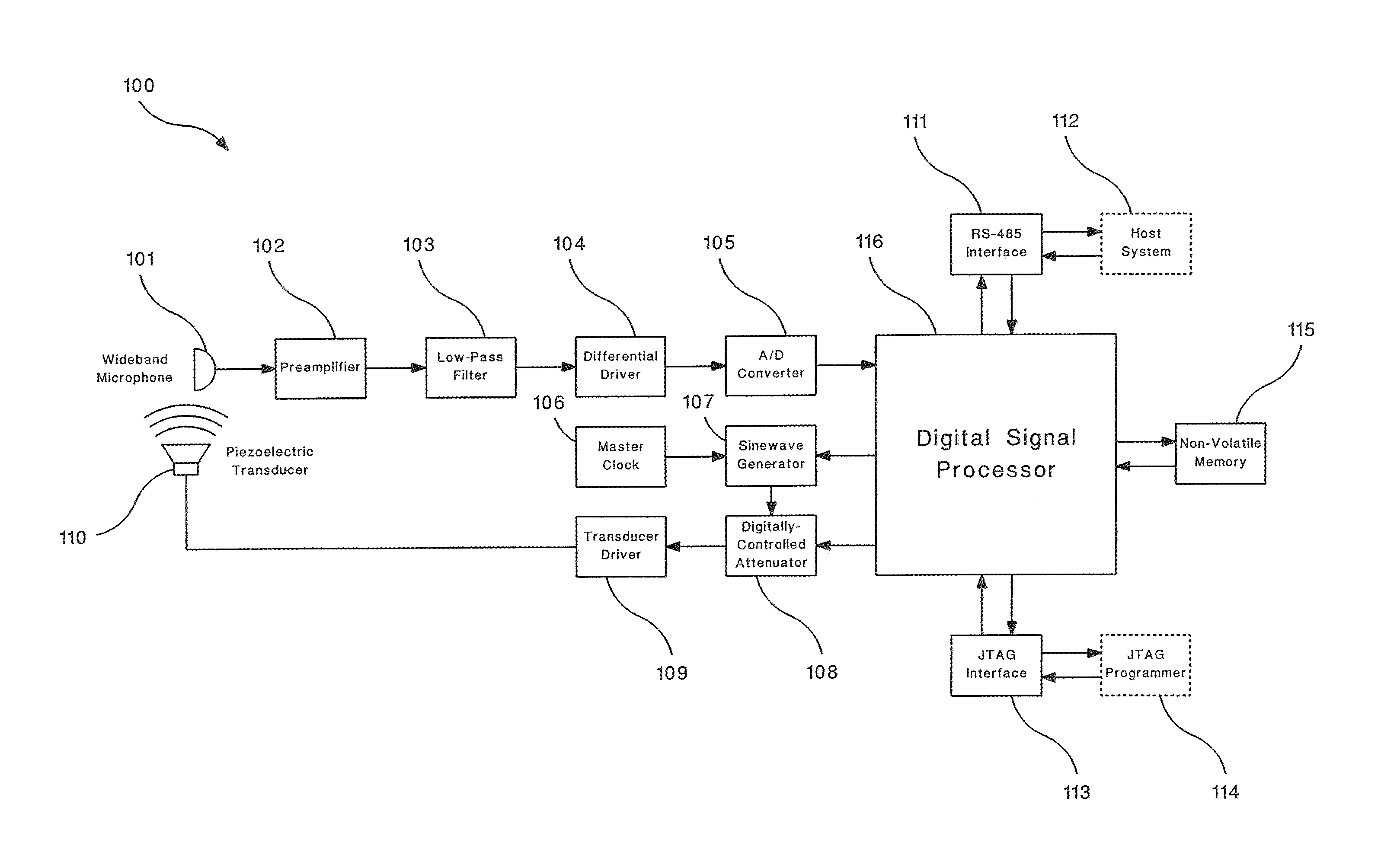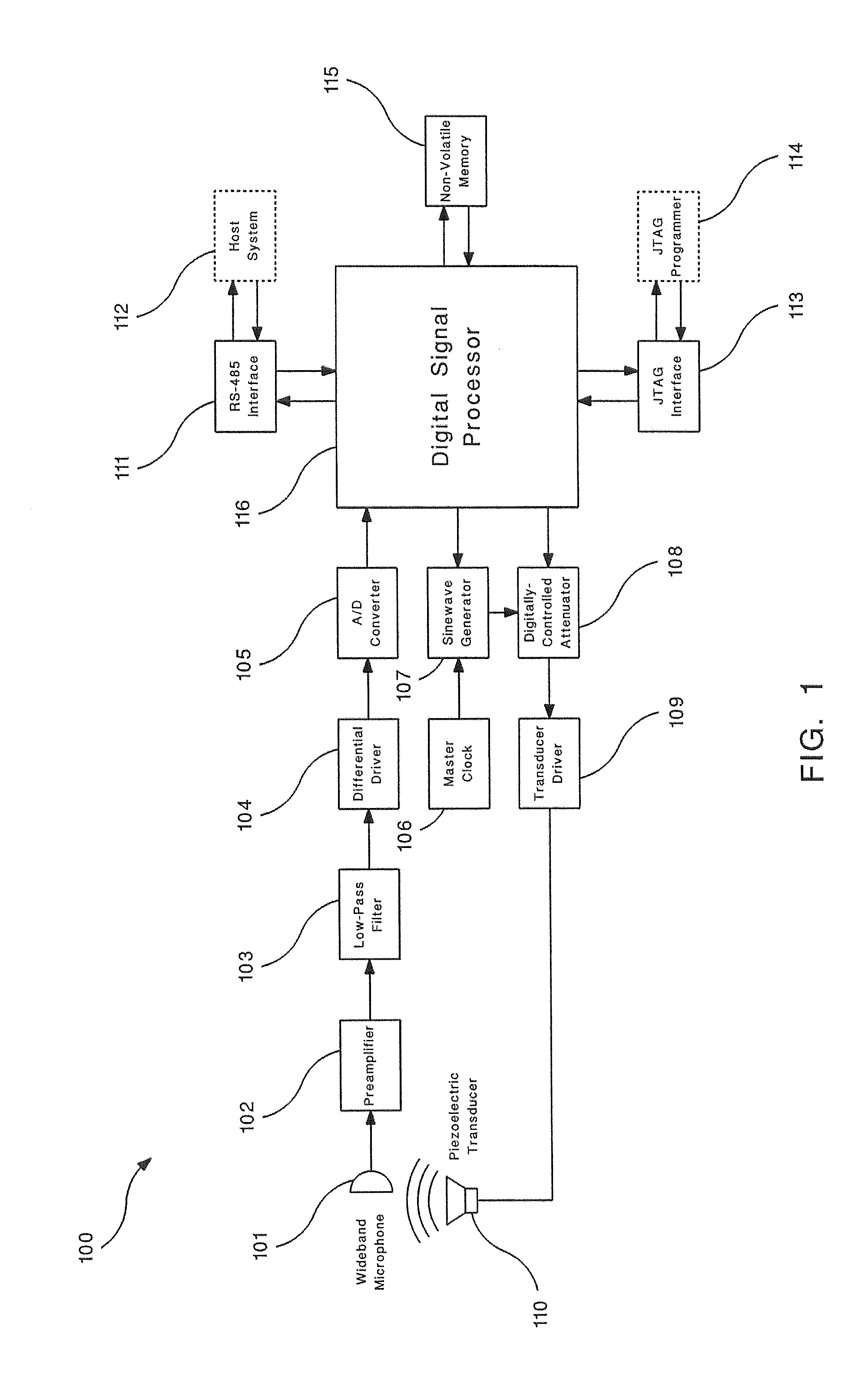System and method for an acoustic monitor self-test
a self-testing and monitor technology, applied in the field of machine condition monitoring, acoustics, digital signal processing, can solve the problems of reducing the sensitivity of the detector, false alarms in nearby detectors, and reducing the output of the emitter to the lowest level
- Summary
- Abstract
- Description
- Claims
- Application Information
AI Technical Summary
Benefits of technology
Problems solved by technology
Method used
Image
Examples
Embodiment Construction
[0011]Embodiments of an acoustic monitor having an acoustic signal source for implementing a self-test are described herein. The acoustic monitor generates acoustic test signals having a frequency associated with a relatively inactive portion of the power spectrum and a sound pressure level providing an optimum signal-to-noise ratio (for example, signal-to-noise ratio exceeding a minimum threshold) at the test frequency. The acoustic test signal is determined by the digital signal processor, based on the power spectrum of the background noise, in order to provide differentiation between the acoustic test signal and the background noise. The acoustic monitor includes a digital signal processor (DSP) to continuously compute the power spectrum of an acoustic signal received by a microphone. The processor also performs, in some non-limiting examples, communication with a host system or human operator, control of the acoustic monitor, and acoustic self-test periodically during operation....
PUM
 Login to View More
Login to View More Abstract
Description
Claims
Application Information
 Login to View More
Login to View More - R&D
- Intellectual Property
- Life Sciences
- Materials
- Tech Scout
- Unparalleled Data Quality
- Higher Quality Content
- 60% Fewer Hallucinations
Browse by: Latest US Patents, China's latest patents, Technical Efficacy Thesaurus, Application Domain, Technology Topic, Popular Technical Reports.
© 2025 PatSnap. All rights reserved.Legal|Privacy policy|Modern Slavery Act Transparency Statement|Sitemap|About US| Contact US: help@patsnap.com


